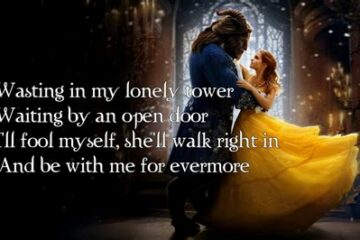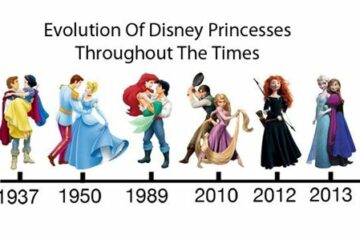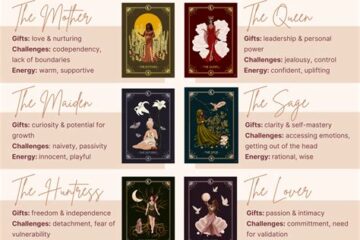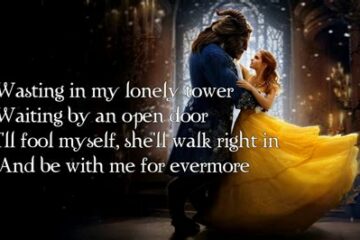A Deep Dive into the Making of Walt Disney’s Beauty and the Beast

A Deep Dive into the Making of Walt Disney's Beauty and the Beast
Title: Unveiling the Enchanting World: A Revealing Look into Beauty and the Beast
Introduction:
Immerse yourself in the captivating tale that has charmed both young and old for decades. Disney’s Beauty and the Beast, a timeless masterpiece, continues to enchant audiences with its mesmerizing blend of romance, adventure, and fantastical elements. In this blog post, we embark on a captivating journey to explore the fascinating aspects that contributed to the film’s enduring charm. Delve into the historical background, the meticulous character development, the groundbreaking animation techniques, the unforgettable music, and the indelible impact Beauty and the Beast has had within the realm of popular culture. Hold on tight, for this enchanting tale is sure to whisk you away into a world of wonder.
The historical background of Beauty and the Beast
Beauty and the Beast is a timeless tale that has captivated audiences for generations. But did you know that the story behind this beloved Disney movie has a fascinating historical background? The origins of Beauty and the Beast can be traced back to a French fairy tale written by Jeanne-Marie Leprince de Beaumont in 1756.
Leprince de Beaumont’s version of Beauty and the Beast was a simplified adaptation of a story that had been around for centuries. The original tale, known as “Cupid and Psyche,” was written by the Roman author Apuleius in the 2nd century AD. Both stories share similar themes, such as the power of true love and the importance of seeing beyond appearances.
In the 18th century, fairy tales were incredibly popular in Europe, especially among women. They provided an escape from the constraints of society and offered a glimpse into a world of enchantment and possibility. Beauty and the Beast, with its themes of transformation and redemption, struck a chord with audiences and became one of the most enduring fairy tales of all time.
- Beauty and the Beast has been adapted numerous times over the years, including in film, stage productions, and even ballet.
- One of the most well-known adaptations of the story is Disney’s animated film released in 1991.
- This iconic film brought Beauty and the Beast to a whole new generation and became an instant classic.
| Year | Medium | Notes |
|---|---|---|
| 1946 | Film | French adaptation directed by Jean Cocteau |
| 1991 | Animated film | Disney’s first theatrical release of the story |
| 2017 | Live-action film | Directed by Bill Condon and starring Emma Watson |
The historical background of Beauty and the Beast provides a deeper understanding and appreciation for the enduring popularity of this enchanting tale. From its humble origins as a French fairy tale to its transformation into a beloved Disney film, this story continues to capture the hearts of audiences around the world. It serves as a reminder that true beauty lies within, and that love has the power to overcome any obstacles.
The creative process behind developing the characters
The creative process behind developing the characters in Beauty and the Beast was a meticulous and intricate one. The film’s animation team focused on bringing each character to life in a unique and memorable way, ensuring that they appealed to both children and adults. The character design began with initial sketches and concept art, which helped to establish the overall look and feel of the movie. From there, the team worked on fleshing out each character’s personality, traits, and motivations, ensuring that they had depth and complexity.
One of the key aspects of the creative process was the extensive research that went into developing each character. The animators studied various sources, such as fairy tales and literature, to understand the archetypes and characteristics that make up a compelling and engaging character. They also drew inspiration from real-life sources, observing and studying human behavior to add authenticity to their creations.
Once the initial designs and research were complete, the animators moved on to the animation techniques used in bringing the characters to life. They employed a combination of traditional hand-drawn animation and computer-generated imagery (CGI) to enhance the visual appeal and expressiveness of the characters. This fusion of techniques allowed for greater flexibility and creativity in portraying the emotions and movements of each character.
The animation techniques used in the film
The animation techniques used in the film Beauty and the Beast played a crucial role in bringing the enchanting story to life. Disney’s animated masterpiece, released in 1991, introduced audiences to a visually stunning world filled with captivating characters and mesmerizing settings. The animation techniques employed by the talented team of artists and animators showcased their innovation and creativity, resulting in a film that continues to be cherished by audiences of all ages.
One of the key animation techniques used in Beauty and the Beast is the process of hand-drawn animation. The film relied heavily on the traditional method of animating each frame by hand, which required meticulous attention to detail and skillful craftsmanship. The artists worked tirelessly to bring the characters to life, carefully crafting every movement and expression to convey emotion and personality. This painstaking process resulted in the fluid and dynamic animation that is characteristic of the film.
Another noteworthy animation technique used in Beauty and the Beast is computer-generated imagery (CGI). Although hand-drawn animation served as the foundation for the film, the use of CGI allowed for the creation of complex and realistic visual effects. One notable example is the iconic ballroom scene in which Belle and the Beast dance together. The intricate movements and intricate details of Belle’s gown were achieved through the use of CGI, enhancing the beauty and grandeur of this memorable scene.
The iconic music and songs of Beauty and the Beast
The iconic music and songs of Beauty and the Beast have played a significant role in making this animated film a timeless classic. Composed by Alan Menken, with lyrics by Howard Ashman and Tim Rice, the soundtrack of the movie is a harmonious blend of enchanting melodies and captivating storytelling. The songs not only enhance the emotions and themes of the story but also became an essential part of pop culture, leaving a lasting impact on audiences around the world.
One of the most beloved songs from the film is “Beauty and the Beast.” This enchanting ballad, performed by Angela Lansbury as the character Mrs. Potts, beautifully captures the essence of the film. With its heartfelt lyrics and captivating melody, the song celebrates the transformative power of love and the inner beauty that lies within. It has become an anthem for many, symbolizing the timeless tale of finding love in unexpected places.
Another iconic song from the movie is “Be Our Guest.” This lively and extravagant musical number is performed by the charismatic Lumière, voiced by Jerry Orbach. The song takes place in the Beast’s enchanted castle, where the household objects come to life to entertain Belle. With its catchy tune and energetic choreography, “Be Our Guest” showcases the film’s animation techniques and brings the magical world of Beauty and the Beast to life.
- Tale as Old as Time is a romantic duet between the Beast (Robby Benson) and Belle (Paige O’Hara). The song beautifully portrays the blossoming love between two contrasting characters and highlights the timeless nature of their story.
- Gaston is a comical and lively song that introduces the arrogant and self-centered character of Gaston. Performed by Richard White, this song brings humor and adds depth to the film’s antagonist.
- Something There captures the growing bond between Belle and the Beast. This sweet and tender song, sung by their respective actors, showcases their evolving relationship as they discover the beauty within each other.
The music and songs of Beauty and the Beast have left an indelible mark on pop culture. The soundtrack received critical acclaim and went on to win numerous awards, including two Academy Awards for Best Original Score and Best Original Song. The film’s songs have been covered by various artists, further solidifying their impact and legacy. The timeless appeal of the music continues to resonate with audiences of all ages and reminds us of the power of love, inner beauty, and the magic of fairy tales.
The impact and legacy of the film in pop culture
The impact and legacy of the film “Beauty and the Beast” in pop culture is undeniable. Since its release in 1991, the beloved Disney classic has captured the hearts of audiences around the world and has left a lasting mark on the entertainment industry.
One of the reasons for the film’s enduring popularity is its timeless story and themes. The tale of love and acceptance resonates with audiences of all ages and has been retold and reimagined in various forms throughout the years. Whether it’s through live-action adaptations, stage productions, or even merchandise, “Beauty and the Beast” has become a cultural touchstone that continues to captivate new generations.
The film’s impact can also be seen in its influence on subsequent Disney animated films. “Beauty and the Beast” was one of the first animated films to be nominated for Best Picture at the Academy Awards, paving the way for other animated films to be recognized for their artistic and storytelling achievements. Additionally, the film’s success inspired Disney to produce more animated musicals, leading to a renaissance of animated storytelling in the 1990s.
Furthermore, the iconic music and songs of “Beauty and the Beast” have become ingrained in popular culture. From the enchanting melody of “Tale as Old as Time” to the catchy tunes of “Be Our Guest” and “Belle,” the film’s soundtrack has become a beloved part of Disney’s musical legacy. These songs continue to be performed in various forms, from live shows to cover renditions, ensuring that the film’s musical impact will be felt for years to come.
In conclusion, the impact and legacy of “Beauty and the Beast” in pop culture is evident in its enduring popularity, its influence on subsequent films, and its iconic music. This beloved Disney classic continues to captivate audiences and remains a significant part of the entertainment industry’s history. Whether through its timeless story or its enchanting songs, the film’s impact will continue to be felt for generations to come.
Frequently Asked Questions
What is the historical background of Beauty and the Beast?
Beauty and the Beast has its roots in various folktales from different cultures, with the most well-known version being the French fairy tale written by Jeanne-Marie Leprince de Beaumont in the 18th century.
How were the characters in Beauty and the Beast developed?
The creative process involved extensive character design and development, with the animators drawing inspiration from both the original fairy tale and the Disney animated film. The characters went through multiple iterations until their final designs were achieved.
What animation techniques were used in the film?
Beauty and the Beast utilized a combination of traditional hand-drawn animation and computer-generated imagery (CGI). The Beast’s transformation sequence, in particular, showcased the innovative use of CGI technology.
What are some iconic music and songs from Beauty and the Beast?
The film is known for its memorable music and songs, composed by Alan Menken with lyrics by Howard Ashman. Some iconic songs include ‘Beauty and the Beast,’ ‘Be Our Guest,’ and ‘Belle.’
How did Beauty and the Beast impact popular culture?
Beauty and the Beast was a critical and commercial success, becoming the first animated film to be nominated for Best Picture at the Academy Awards. Its timeless story and themes have made it a beloved part of popular culture, inspiring adaptations, merchandise, and even a Broadway musical.
What was the process of adapting Beauty and the Beast into a live-action film?
The live-action adaptation of Beauty and the Beast involved casting, reimagining the story for a contemporary audience, and incorporating new elements while staying true to the original. The film was directed by Bill Condon and starred Emma Watson as Belle.
How was Beauty and the Beast received by critics and audiences?
Beauty and the Beast received positive reviews from critics, who praised its faithfulness to the original while adding depth to the characters. It also performed well at the box office, becoming one of the highest-grossing films of the year.
How Beauty And The Beast Lyrics Inspire Generations
December 21, 2024The Journey Of Disney Princesses: Growth And Empowerment
December 21, 2024Crafting Memorable Disney Characters: An Insider’s View
December 21, 2024The Feminine Archetype In Disney Princesses
December 20, 2024Capturing The Essence Of Love In Beauty And The Beast Lyrics
December 20, 2024The Influence Of Disney Characters On Fashion Trends
December 20, 2024
Leave a reply Cancel reply
Recommended
-
The Illusions of Beauty and the Beast Jr Dating Song
October 6, 2021 -
Beauty And The Beast Song With Lyrics
August 22, 2023 -
The Use Of Color In Conveying Emotion In Beauty And The Beast
December 6, 2024









